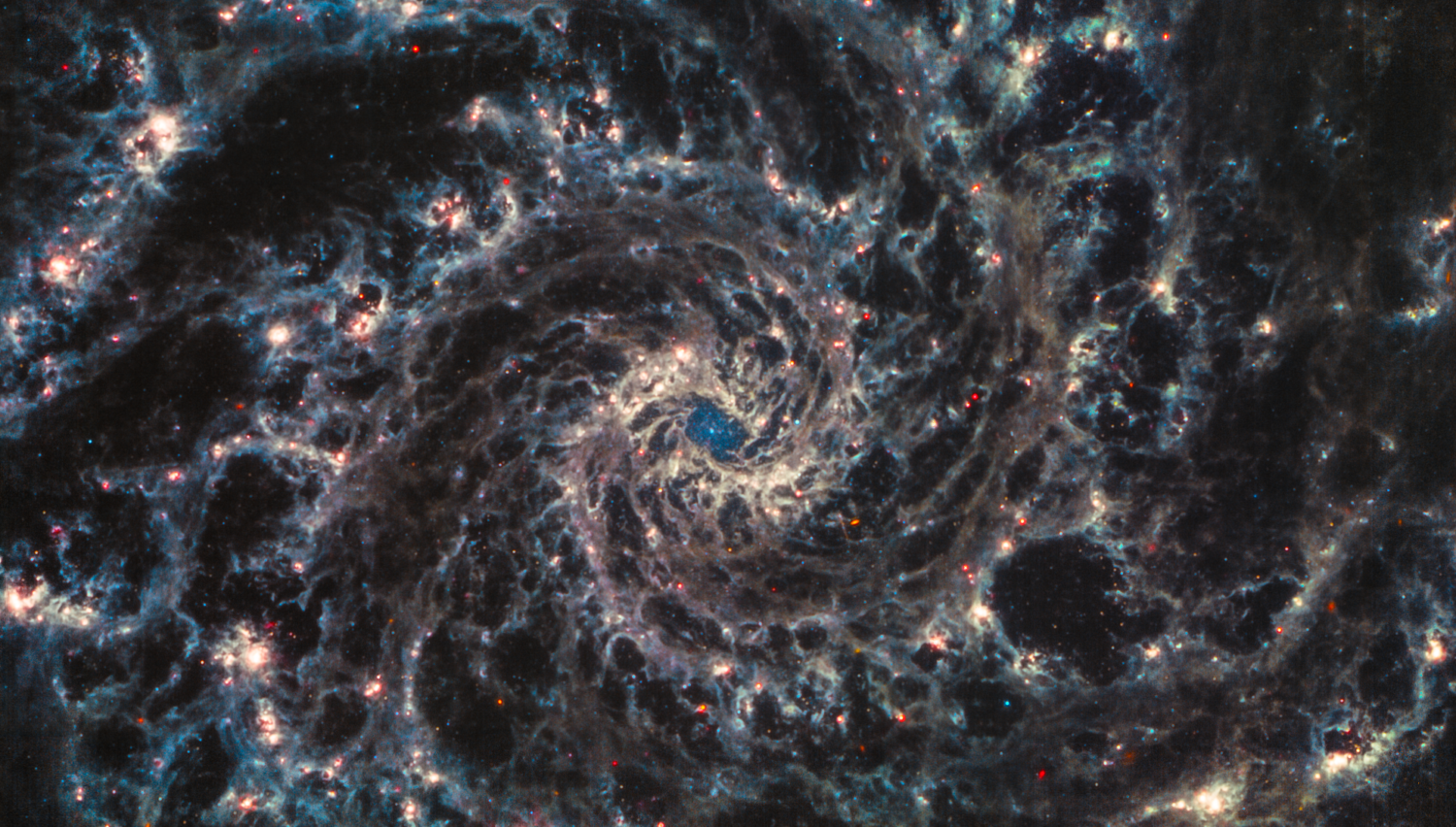More images are emerging from NASA’s James Webb Space Telescope, and they’re giving us the most detailed look at other galaxies yet. Back on July 11, NASA gave the world a first glimpse from the telescope’s view with a few photos of deep space. Those images were just the appetizer for many more, though.
A new batch of images from the Webb Space Telescope showcases galaxies with a clarity scientists and the public have never seen before, even with the Hubble telescope, which was launched into space in 1990.
One of the eye-catching images is of a galaxy known to scientists as NGC628, or the “Phantom Galaxy.” Judy Schmidt, an astronomical image processor on the PHANGS Survey (PHANGS is an acronym for Physics at High Angular Resolution in Nearby Galaxies), shared a new image of NGC628 on Flickr, shown below:

“Squeezing some color out of the various filters showing all the glowing dust in the center of NGC628,” Schmidt captioned the photo in her collection.
Another view of the Phantom Galaxy from Twitter user @gbrammer went viral as he played with raw data from the telescope shared with the public from various sources, including MAST, a scientific archive of NASA and other science products.
“Let’s just see what JWST [Webb Telescope] observed yesterday…,” @gbrammer tweeted. “Oh, good god.”
Let's just see what JWST observed yesterday…
Oh, good god. pic.twitter.com/8UQWi2zPlR— gbrammer (@gbrammer) July 18, 2022
In the subsequent thread, the poster shared the purple colors come from the galaxy’s molecular makeup and that it impacts how photo filters see the colors. Pretty amazing!
The level of detail the Webb Telescope has given scientists and novice skywatchers is as different as night and day, according to experts. To get a sense of the difference between the clarity advancements between the two telescopes, software developer John Christensen shared an interactive image of the Southern Ring Nebula that shows the same image taken by Hubble and Webb.
I made a tool to compare Webb's new images to Hubble! https://t.co/1JqTxabgGC#JamesWebbSpaceTelescope pic.twitter.com/2wRO8t0LXD
— John Christensen (@JohnnyC1423) July 12, 2022
The differences are astounding when you see them in this way, especially for most of us who have an untrained eye.
As if these new looks at galaxies weren’t enough, New Scientist reported on July 20 that the Webb Space Telescope had just found the oldest galaxy humans have ever observed in the universe, breaking the record by 100,000 million years. The galaxy, known as GLASS-z13, dates back to 300,000 million years after the big bang.
You can view more images and stay up to date on the latest from the Webb Space telescope by visiting the official website of the project.
This story originally appeared on Simplemost. Checkout Simplemost for additional stories.


